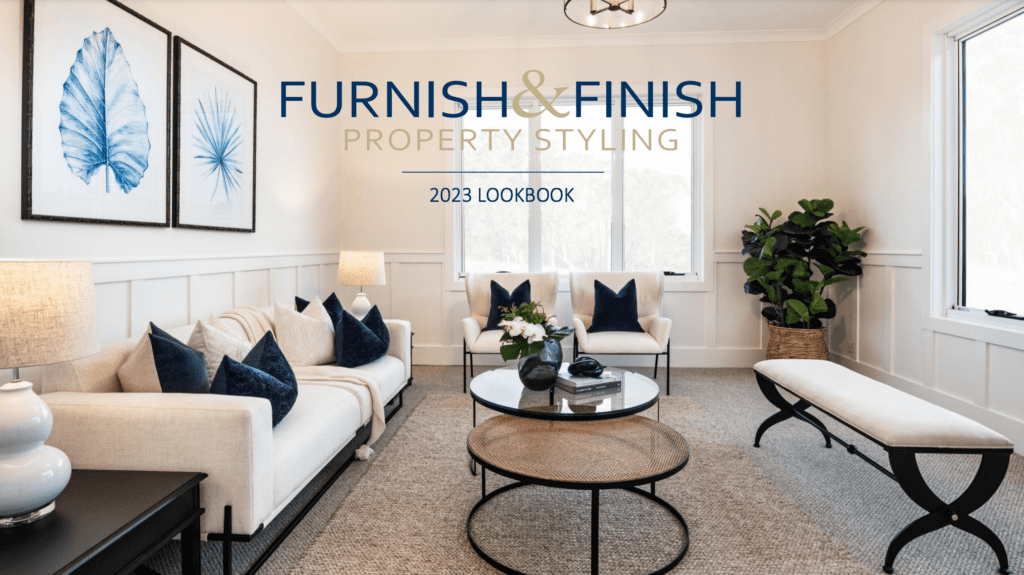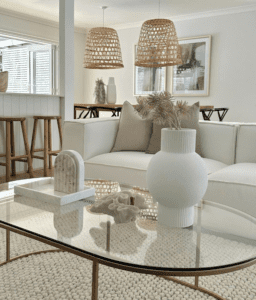Colour is one of the most powerful tools in the world of property styling, playing a pivotal role in setting the mood and atmosphere of a space. When it comes to showcasing your property in the best possible light, understanding the principles of colour psychology can make all the difference in creating interiors that resonate with potential buyers and elevate your property’s value.
In this article, we will delve into the fascinating realm of colour psychology and share expert wisdom on how to harness the power of colour in your property styling strategy.
1. Understanding the Emotional Impact of Colour
The power of colour psychology lies in its ability to evoke specific emotions and feelings, influencing how potential buyers perceive and experience your property. By incorporating colours that provoke positive associations, you can create inviting and welcoming spaces that appeal to a broad range of buyers:
– Warm Colours: Colours such as red, orange, and yellow are known to evoke feelings of warmth, energy, and excitement. These hues can be used in moderation to create focal points or to bring life to specific areas within a space.
– Cool Colours: Shades of blue, green, and purple tend to promote feelings of calm, tranquillity, and relaxation. They work well in bedrooms, bathrooms, and other spaces where serenity is desired.
– Neutral Colours: Neutral shades like white, beige, and grey provide an adaptable backdrop that enables potential buyers to envision their own style within the space, making them ideal for main living areas and wall colours.
2. Creating Harmonious and Cohesive Colour Schemes
Developing a harmonious and cohesive colour scheme is essential to crafting visually appealing spaces that exude a sense of balance and unity. Focus on the following techniques to create colour schemes that complement your property’s architecture and inspire potential buyers:
– Monochromatic Schemes: By selecting various tints, shades, and tones of a single colour, you can create a monochromatic colour scheme that provides visual consistency and depth while maintaining a sense of cohesion and harmony.
– Complementary Schemes: This approach involves choosing colours that are opposite each other on the colour wheel, such as blue and orange or purple and yellow. Complementary colour schemes create high contrast and a visually exciting atmosphere.
– Analogous Schemes: Analogous colours are those adjacent to one another on the colour wheel, creating a harmonious and subtly coordinated effect. For example, blue, green, and yellow create a cool, calming environment, while red, orange, and yellow invoke a sense of warmth and vibrancy.
3. Tapping into Buyer Preferences and Market Trends
Understanding the preferences of your target audience and staying informed about current market trends can help you select colours that resonate with potential buyers and showcase your property in the best possible light:
– Demographic Considerations: Consider the preferences and expectations of your target demographic when selecting colours, catering to the tastes and lifestyles of buyers most likely to be interested in your property. For example, family homes may benefit from warmer, more inviting hues, while luxury apartments may demand bolder, more sophisticated colour choices.
– Trend Awareness: Pay attention to emerging colour trends within the design and property industries, incorporating popular and fashionable hues that will create a modern and on-trend aesthetic for your property.
– Location Influences: Your property’s location may also play a role in colour selection. Coastal properties, for example, often benefit from a fresh, light colour palette that reflects the surrounding environment and lifestyle.
4. Utilising Colour for Flow and Functionality
Employing colour strategically can not only enhance the visual appeal of your property but also improve its perceived functionality and flow by creating seamless transitions and defining specific zones:
– Colour Flow: Utilise related colours or tonal families throughout your property to establish a sense of continuity and fluidity, ensuring that individual rooms feel connected to the overall design.
– Defining Spaces: Implement contrasting colours or bold accents to define specific zones within open-plan spaces, creating a sense of organisation and purpose without the need for physical barriers.
– Room Size Perception: Manipulate the perception of room size through colour choices, using lighter hues to make small spaces feel larger and more open, while darker shades can create a cosy, intimate atmosphere in larger areas.
Conclusion
Harnessing the power of colour psychology in your property styling strategy can have a profound effect on buyer reactions and your property’s overall appeal. By understanding the emotional impact of colour, creating harmonious and cohesive colour schemes, tapping into buyer preferences and market trends, and utilising colour for flow and functionality, you can craft spaces that not only captivate potential buyers but also promote a strong sense of connection, comfort, and aspiration.
Embrace the potential of colour psychology to elevate your property and ensure it stands out in the competitive real estate market. Partner with Furnish & Finish for expert guidance on selecting the perfect colours for your property styling needs. Contact us today to embark on a journey towards creating visually striking and emotionally evocative spaces that leave a lasting impression on potential buyers.






No Comments
Sorry, the comment form is closed at this time.